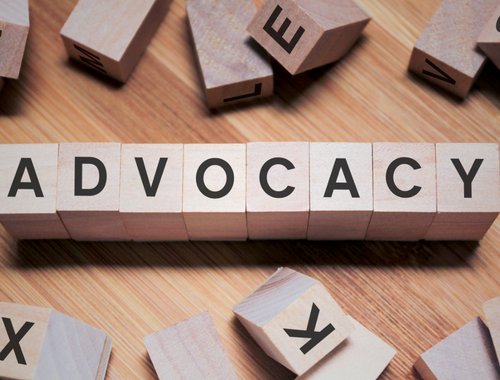Difference Between Advocacy and Activism
In today’s world, we are witnessing many changes happening around us. Either these changes are about any social phenomenon or political reforms. Many of these developments that have occurred in the past are due to running some social movements, i.e. through Advocacy or Activism. The person who follows the principles of advocacy is called an advocate. Likewise, the one who goes around with principles of activism is known as an activist.
There is a fine line between advocacy and activism. Advocacy is using voice to support a specific cause by getting support from a person or group. At the same time, activism entails using forceful actions, e.g. protests, street marches, rallies, and strikes, in favor of a perceived social or political good by intervening in the social, political, or economic environment.

What is Advocacy?
As described by Cox & Pezzullo, advocacy brings out social change by supporting and arguing in support of a special cause, interest, policy, or values. Also, advocacy is giving a voice on behalf of a group or person.
Purpose of Advocacy
Advocacy is an efficient process of promoting people’s interests by:
- Giving voice to a voiceless person
- Enabling them to express their views
- Making the state listen to the voice of the commoner by protecting their rights
Tools for Advocacy
An advocate uses his voice to make a paradigm shift. For this purpose, he uses specific tools to make his or the group or person he supports voice heard by:
- Writing blogs and press releases on the social issue
- Making videos in support of a cause
- Meeting with lawmakers and politicians
- Running social media campaigns for an interest

What is Activism?
Activism is when one finds something unjust and then takes direct action to change an unjustified phenomenon. Activism is pressuring the system to take action to nullify injustice in society.
Purpose of Activism
An activist enforces his voice by taking vigorous actions. The activist takes risks and faces danger. History highlights many revolutionary social changes that have been the result of efforts taken by the activists. Those reforms were carried out keeping in view the purpose:
- To end slavery
- To put an end to Racism
- Enabling people to fight for their right
- Making the community take control over their lives
- To keep justice prevailing in the society
Tools for Activism
The activist holds a strong belief in social and political change by taking part in the following activities:
- Street marches
- Protests
- Hunger strikes
- Marches
Possible Similarities between Advocacy and Activism
Reform
Both activists and advocates try to reform existing public laws that hinder the provision of justice to society.
Mobilization
National, regional and international organizations are targeted and mobilized by advocacy and activism to bring their attention toward specific interests.
Differences between Advocacy and Activism
Critique versus Collaborate
An activist calls for action by criticizing the state’s stance on interest, while an advocate tries to develop networking with government officials to respond to injustice.
Confront vs Facilitate
An activist tries to employ confrontational techniques, e.g. hunger strikes and protests. On the other hand, advocacy tries to facilitate by bridging the gap between the victim and the state regarding information exchange and how the state thinks towards the victim.
Claim vs Build and maintain
Activism involves claiming innocence and the right to justice. Advocacy works on building trusting relationships with the victim and government officials. Also
Advocacy vs Activism: Comparison Chart

Summary
Activism and advocacy both work on different approaches to bring about change in society. Advocate tries to work in the system for effective change while persuading government officials and negotiating with them. On the other hand, Activists are more inclined towards rigorous actions, i.e. protests, rallies, marches, and civil disobedience movements. Advocacy is considered a more effective way, especially when working with government officials. Each approach has its advantages and disadvantages, and eventually, it depends on the situation as to which approach will be successful.
FAQS
What is the similarity between advocacy and activism?
Advocacy and activism work on the same phenomenon of bringing about change in society. The activists and advocates try to reform society and mobilize different international and national organizations towards an interest.
What is the difference between advocacy and advocate?
Advocacy is using one’s influence on behalf of others on the causes close to his heart. An advocate is a person who works on the principles of advocacy and speaks for others.
What is activism?
Activism is about taking concrete actions for social or human rights movements. These actions include protests, rallies, marches, and hunger strikes.
What is an example of advocacy?
Advocacy organizations have a broader range of objectives towards a specific goal on which most of their campaigns work to fulfill them. For example, environmental conservation advocacy groups focus on some key elements of legislation that are conserved with environmental protection. Along with that, advocacy groups run campaigns to bring awareness to the public about environmental sustainability.
What are the four levels of advocacy and activism?
There are four different levels on which every person who seeks to change the world through advocacy and activism works: 1) the personal level, 2) The family level, 3) The community level, 4) The world-population
What are the main types of activism?
The main types of activism range from giving directions to the community via writing articles in a newspaper to demonstrative actions, i.e. protests, boycotts, strikes, marches, and rallies.
- Difference Between Hemorrhage and Infarct - January 18, 2023
- Difference Between Advocacy and Activism - January 17, 2023
- Difference Between Sustainable Development and Green Development - January 16, 2023
Search DifferenceBetween.net :
Leave a Response
References :
[0]Pezzullo, Phaedra C., and J. Robert Cox. Environmental Communication and the Public Sphere. Fourth ed., SAGE Publications, Inc, 2016.
[1]Gallagher, Janice. “The Last Mile Problem: Activists, Advocates, and the Struggle for Justice in Domestic Courts.” Comparative Political Studies, vol. 50, no. 12, 2017, pp. 1666–1698., https://doi.org/10.1177/0010414016688001.
[2]Aldred, Rachel. “Chapter 4 The Role of Advocacy and Activism.” Cycling and Sustainability, Emerald Group Publishing Limited, 2012, pp. 83–108.
